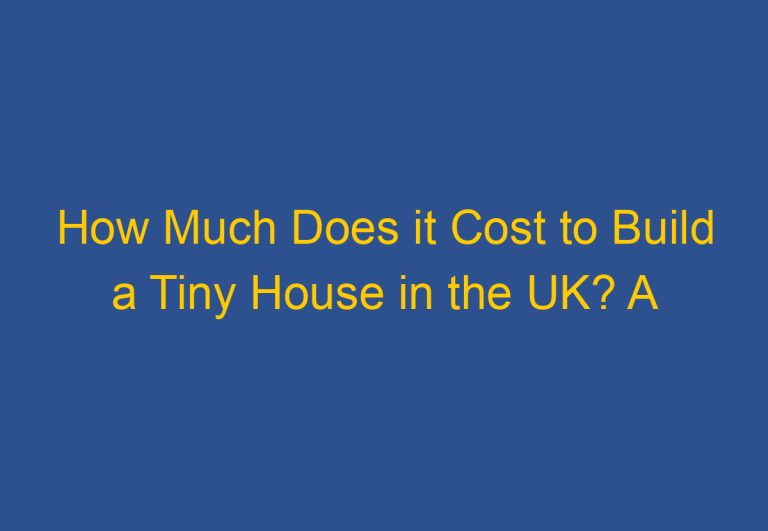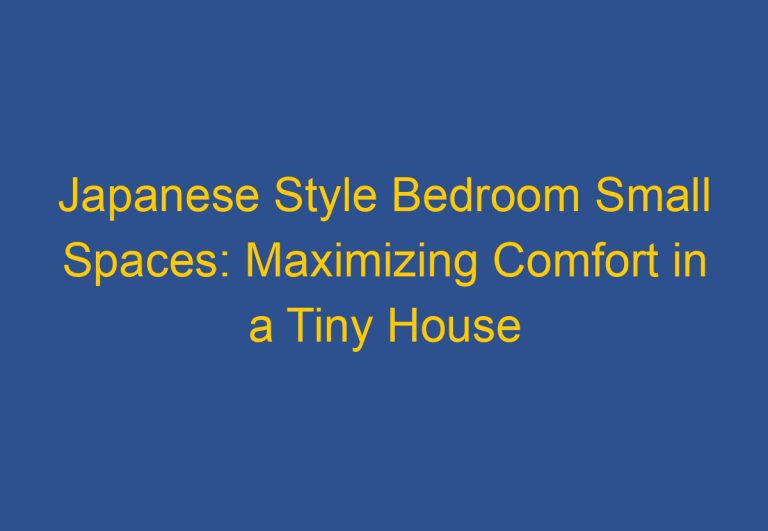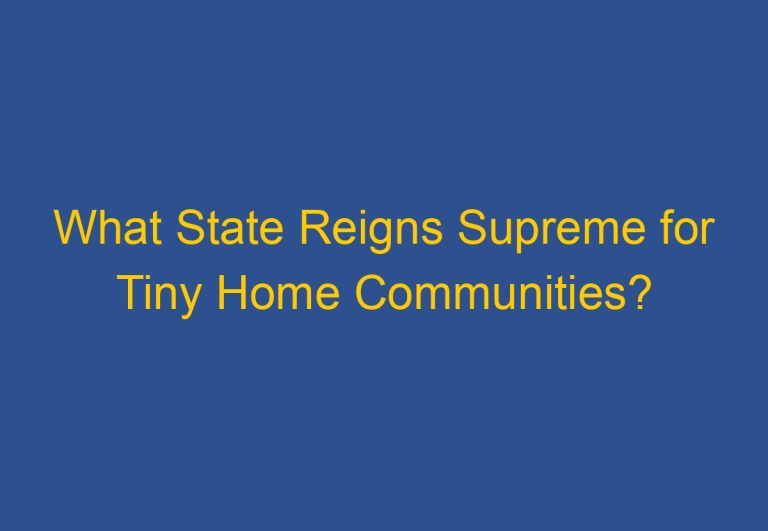What is the Most Expensive Part of a Tiny House? A Cost Breakdown of Building a Tiny House
Tiny homes have become increasingly popular in recent years, as people look for more affordable and sustainable housing options. While the cost of a tiny house is typically far less than that of a traditional home, there are still a number of expenses to consider. One of the most significant costs associated with building or buying a tiny house is the price of the materials used, particularly when it comes to the most expensive part of a tiny house.
So what is the most expensive part of a tiny house? According to experts, it can vary depending on a number of factors. For instance, the type of foundation used can have a big impact on the overall cost of the build. A tiny house built on a traditional foundation, for example, will likely cost more than one built on a trailer. Additionally, the materials used for the exterior and interior of the home can also significantly impact the cost.
Another factor to consider is the level of customization and the size of the tiny house. Larger tiny homes will naturally cost more than smaller ones, and those that are fully customized will likely be more expensive than those that are built using pre-fabricated plans. Nonetheless, there are a number of ways to keep costs down when building or buying a tiny house, and it is important to carefully consider all of the options before making a decision.
Financial Considerations of Tiny House Living
Living in a tiny house can be a financially savvy choice for those looking to downsize and simplify their lives. However, it’s important to consider all the financial aspects of tiny house living before making the decision to build or buy one.
Cost Breakdown of Building a Tiny House
Building a tiny house can be a cost-effective option for those who have the skills and time to do it themselves. The cost of building a tiny house can vary greatly depending on the materials used, the size of the house, and the level of customization. According to Fixr, the average cost to build a tiny home in the U.S. ranges from $40,000 to $80,000, depending on factors such as size and location.
If you choose to hire a general contractor to build your tiny house, the cost can increase significantly. The cost of hiring a general contractor can range from $50 to $150 per hour, and the total cost of a tiny house built by a general contractor can range from $60,000 to $100,000 or more.
Tiny House Buying Expenses
Buying a pre-built tiny house can be a convenient option for those who don’t have the time or skills to build one themselves. The cost of a pre-built tiny house can vary greatly depending on the size, amenities, and materials used. According to Rocket Mortgage, most tiny homes cost between $30,000 and $60,000, although prices can go as high as $150,000 depending on what amenities you want to include.
In addition to the cost of the tiny house itself, there are other expenses to consider when buying a tiny house, such as delivery and setup fees, building permits, and zoning laws. It’s important to research these expenses before making a purchase.
Ongoing Costs and Utilities
Living in a tiny house can also result in ongoing cost savings in terms of utilities and maintenance. Because tiny houses are smaller, they require less energy to heat and cool, resulting in lower utility bills. However, it’s important to consider the cost of utilities such as water, electricity, and propane if you’re not connected to the grid.
Maintenance costs for a tiny house can also be lower than for a traditional home, but it’s important to factor in the cost of repairs and replacements for fixtures, appliances, and other components.
Overall, living in a tiny house can be a financially responsible choice for those looking to downsize and simplify their lives. However, it’s important to consider all the financial aspects of tiny house living before making the decision to build or buy one.
Design and Lifestyle Impact
Maximizing Space and Functionality
When it comes to tiny houses, maximizing space and functionality is key. The most expensive part of a tiny house is often the design and layout. A designer can help create a layout that makes the most of the available space, while also providing the necessary functionality. This includes everything from the placement of fixtures to the use of multi-functional furniture.
One popular trend in tiny house design is the use of lofts. Lofts can provide additional sleeping space, storage, or even an office area. However, they can also impact privacy and accessibility. A designer can help find the right balance between functionality and privacy, while also ensuring the loft is safe and easy to access.
Another important consideration is the use of amenities. While it may be tempting to include every luxury feature, it’s important to remember that every inch of space counts. A designer can help determine which amenities are necessary and how to incorporate them into the design without sacrificing functionality.
Adapting to the Tiny House Lifestyle
Living in a tiny house requires a certain lifestyle adjustment. Downsizing and embracing a minimalist lifestyle is often necessary to make the most of the available space. However, this can be a difficult transition for some.
A designer can help create a layout that supports a minimalist life, while also providing comfort and style. This includes everything from the use of natural light to the placement of furniture. It’s important to remember that the design should be tailored to the individual’s needs and preferences.
When it comes to the environmental impact of tiny homes, it’s important to consider the materials used in the design and construction. A designer can help find sustainable materials that are both environmentally friendly and cost-effective.
Overall, the design and lifestyle impact of a tiny house can be the most expensive part. However, with the help of a designer, it’s possible to create a functional and comfortable living space that meets the individual’s needs and preferences.
Frequently Asked Questions
What components typically drive up the cost of constructing a tiny house?
The cost of building a tiny house can vary greatly depending on several factors. Some of the components that typically drive up the cost of constructing a tiny house include the size of the house, the quality of materials used, the type of foundation, and the complexity of the design. Additionally, features such as plumbing, electricity, and heating/cooling systems can also add to the overall cost.
How does the cost of a tiny house on wheels compare to one on a foundation?
Generally, a tiny house on wheels is more expensive than one on a foundation due to the added cost of constructing a trailer and ensuring that the house is road-worthy. However, a tiny house on wheels can also offer more flexibility in terms of location and mobility.
Can you break down the major expenses involved in building a 2 bedroom tiny house?
The major expenses involved in building a 2 bedroom tiny house include the cost of materials, labor costs, permits, and fees. Additionally, the cost of features such as plumbing, electrical systems, and heating/cooling systems can also add to the overall cost.
What are the cost implications of adding an extra bedroom to a tiny house?
Adding an extra bedroom to a tiny house can significantly increase the cost of construction, as it requires additional materials and labor. Additionally, it may also require a larger foundation or trailer, which can further add to the cost.
Are there any unexpected expenditures to anticipate when budgeting for a tiny house?
When budgeting for a tiny house, it is important to anticipate unexpected expenditures such as permit fees, zoning requirements, and the cost of utilities. Additionally, unforeseen construction issues or changes in design can also add to the overall cost.
Why do prices for tiny homes vary widely, and what factors contribute to the higher end of the spectrum?
Prices for tiny homes can vary widely depending on several factors, including the size of the house, the materials used, the complexity of the design, and the location of the build. Additionally, features such as plumbing, electrical systems, and heating/cooling systems can also add to the overall cost. Finally, the reputation and experience of the builder can also contribute to the higher end of the pricing spectrum.










